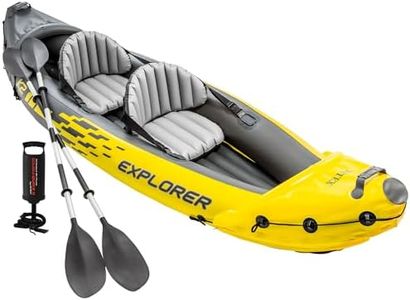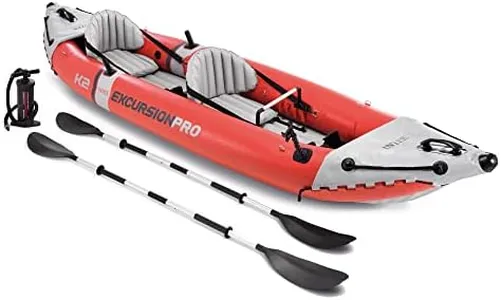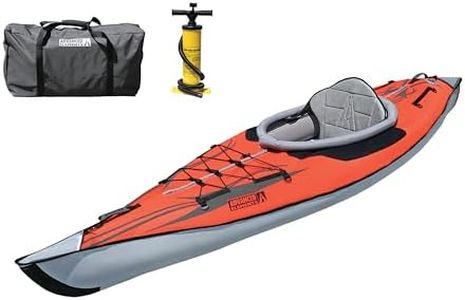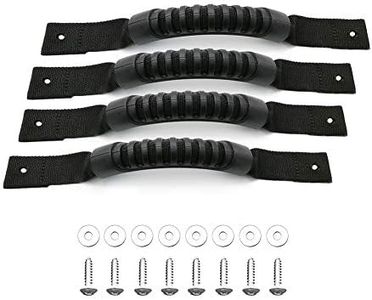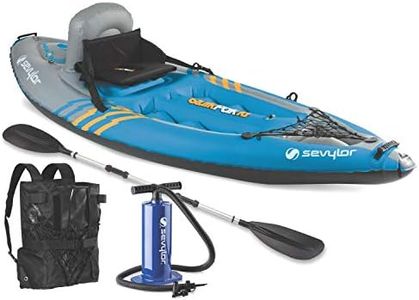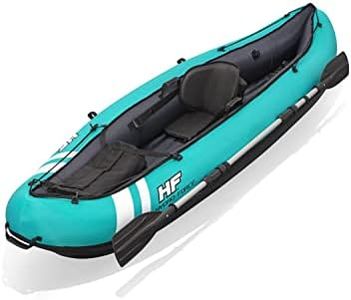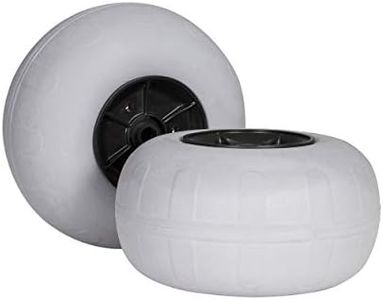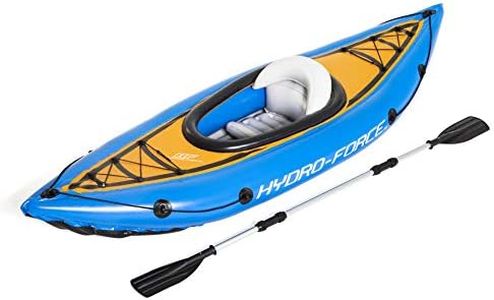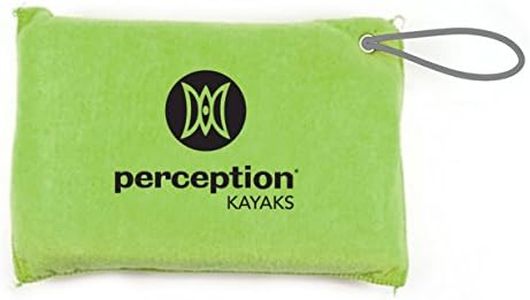We Use CookiesWe use cookies to enhance the security, performance,
functionality and for analytical and promotional activities. By continuing to browse this site you
are agreeing to our privacy policy
10 Best Kayaks
From leading brands and best sellers available on the web.Buying Guide for the Best Kayaks
When choosing a kayak, it’s important to think about how and where you’ll be using it. Kayaks come in different shapes, sizes, and materials, each suited for specific activities like leisurely paddling on a calm lake, whitewater rafting, fishing, or touring longer distances. Understanding your needs and environment will help guide your choice, so consider aspects like comfort, portability, stability, and storage. The right kayak helps you have a safe and enjoyable time on the water.Type (Recreational, Touring, Whitewater, Fishing, Inflatable)This refers to the main design purpose of the kayak. Recreational kayaks are usually wider and more stable, ideal for calm waters and beginners, but aren’t great for fast or rough waters. Touring kayaks are longer and slimmer, designed for speed and covering longer distances efficiently, making them better for experienced paddlers or those wanting to go further. Whitewater kayaks are short and maneuverable, built to handle rapids and quick turns. Fishing kayaks have added features like rod holders and extra storage, focusing on stability. Inflatable kayaks are lightweight and portable, good for easy transport and storage, but may not be as robust as hard-shell types. Think about your main activity and pick a kayak type that matches—if you want to relax on lakes, choose a recreational; for adventure or travel, look into touring or inflatable; for fishing, pick one designed for anglers; and for river rapids, pick whitewater models.
LengthThe length of a kayak impacts both speed and maneuverability. Shorter kayaks (around 8-10 feet) are easier to turn and control, making them suitable for whitewater or kids. Medium kayaks (around 10-12 feet) offer a balance of stability and agility, great for recreational paddling. Longer kayaks (12-16 feet or more) track in a straight line better and are faster, making them ideal for touring or long trips. Your choice should depend on where you’ll paddle the most; for narrow, twisty rivers go shorter, and for open lakes or long journeys, consider longer options.
Width (Beam)Width refers to how wide the kayak is at its widest point. Wider kayaks (over 28 inches) are more stable and less likely to tip, making them good for beginners or activities where stability matters, like fishing. Narrower kayaks (under 24 inches) are faster and easier to paddle at speed, often chosen by experienced paddlers or those interested in covering more ground. If you’re new or value stability, go wider. If your priority is speed or efficiency, go narrower.
Weight CapacityWeight capacity tells you how much total weight the kayak can safely carry, including you and any gear. Choosing a kayak with a capacity too close to your total load can make it less stable or harder to paddle. It’s best to pick a kayak with a little extra capacity beyond your combined body weight and gear, especially if you’ll bring coolers, cameras, or other equipment. Estimate your total load and look for kayaks with plenty of margin for safety.
MaterialKayaks are made from various materials: plastic (polyethylene), composite (fiberglass or carbon fiber), and inflatables (PVC or rubberized fabric). Plastic kayaks are durable and budget-friendly but can be heavy. Composite kayaks are lighter and glide better but require careful handling. Inflatable kayaks are easy to transport and store but may not perform as well as rigid kayaks. Your decision should be based on how portable you need your kayak to be, how rough you’ll be with it, and your weight-lifting comfort.
Sit-In vs. Sit-On-TopThis refers to the seating style. Sit-in kayaks have an enclosed cockpit and protect your legs from wind and water, good for cooler climates and longer trips. Sit-on-top kayaks have an open deck, making getting in and out easier, and are preferred in warm weather or for activities like fishing and snorkeling where you might want to jump in and out of the water frequently. Choose sit-in if you want more protection or are paddling for longer periods; choose sit-on-top for ease and warm environments.
Storage and Transport FeaturesSome kayaks come with storage hatches, bungee cords, and gear tracks, making them more useful for carrying supplies. Others are designed for easier car-topping or folding for apartment storage. Think about how much gear you’ll take and how you’ll get your kayak to the water; kayaks with more built-in storage and carrying handles are useful if you want to go on longer trips or if you must move your kayak alone.
